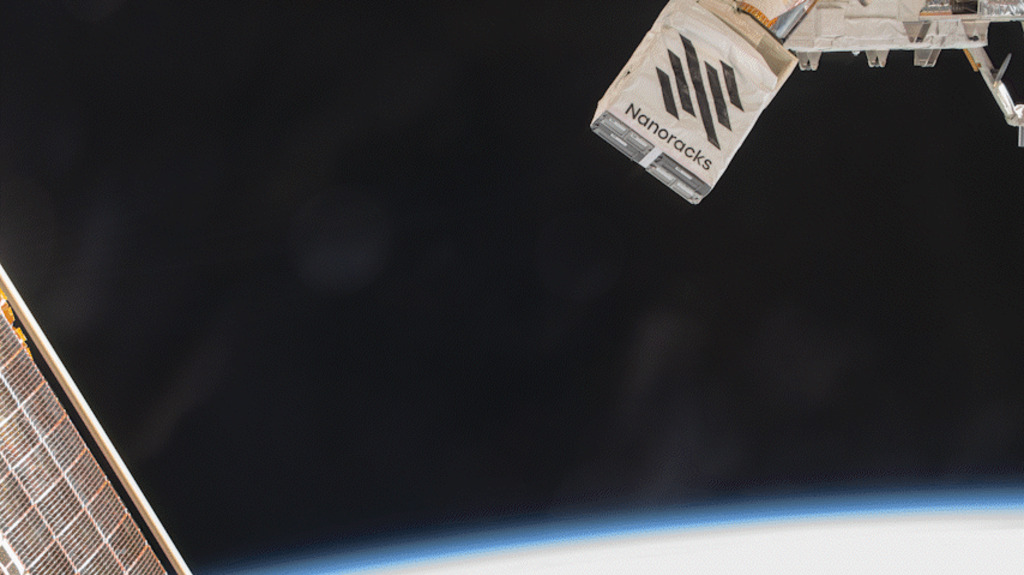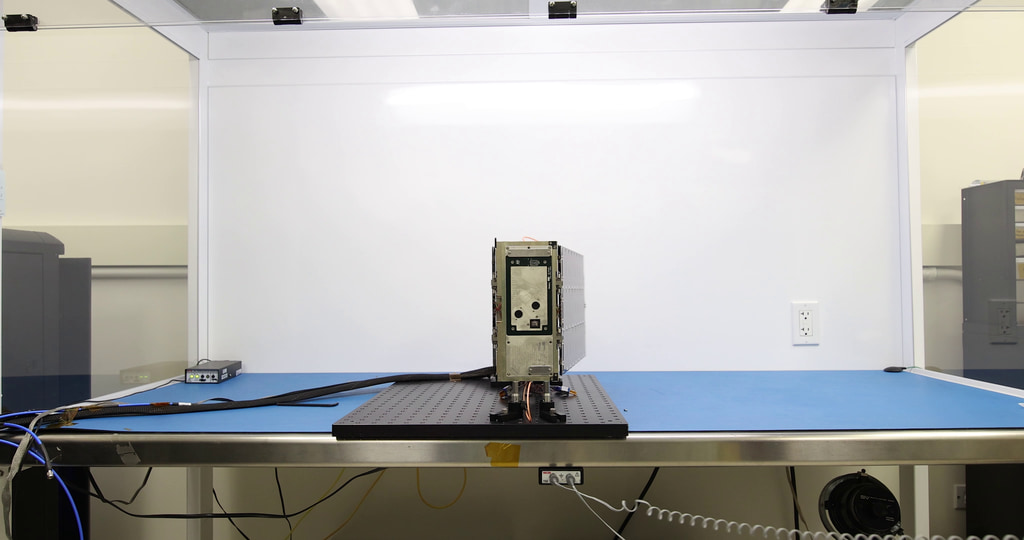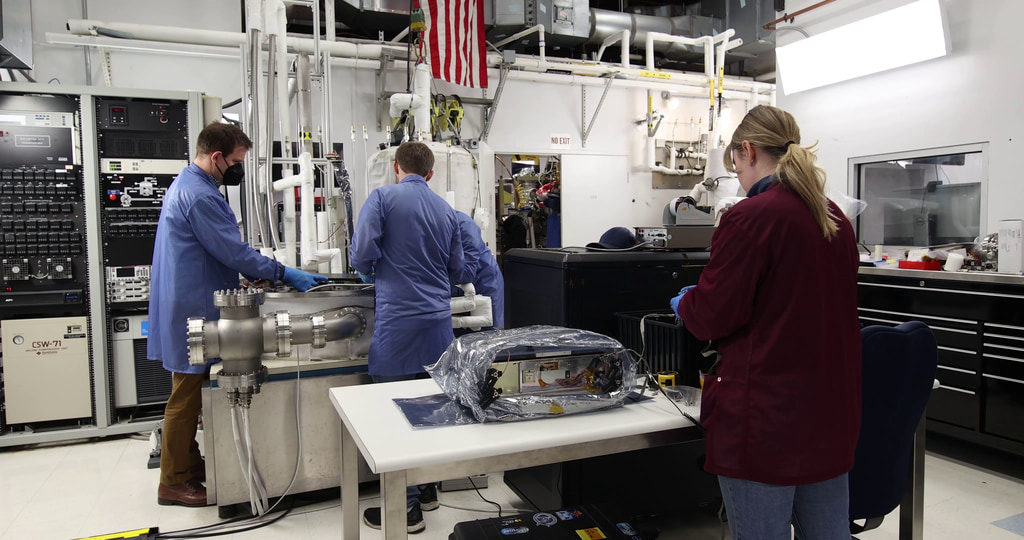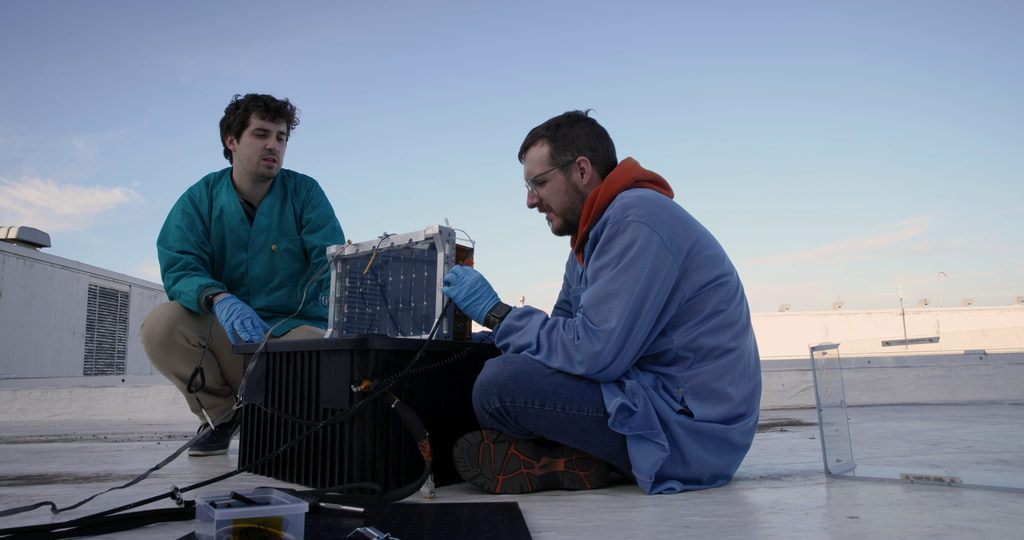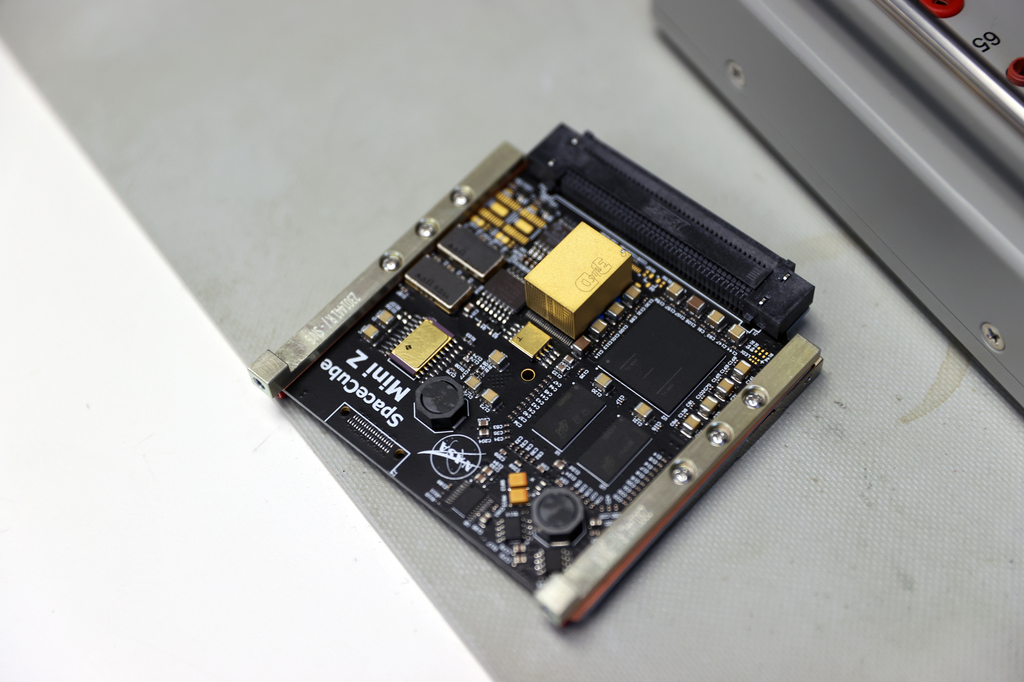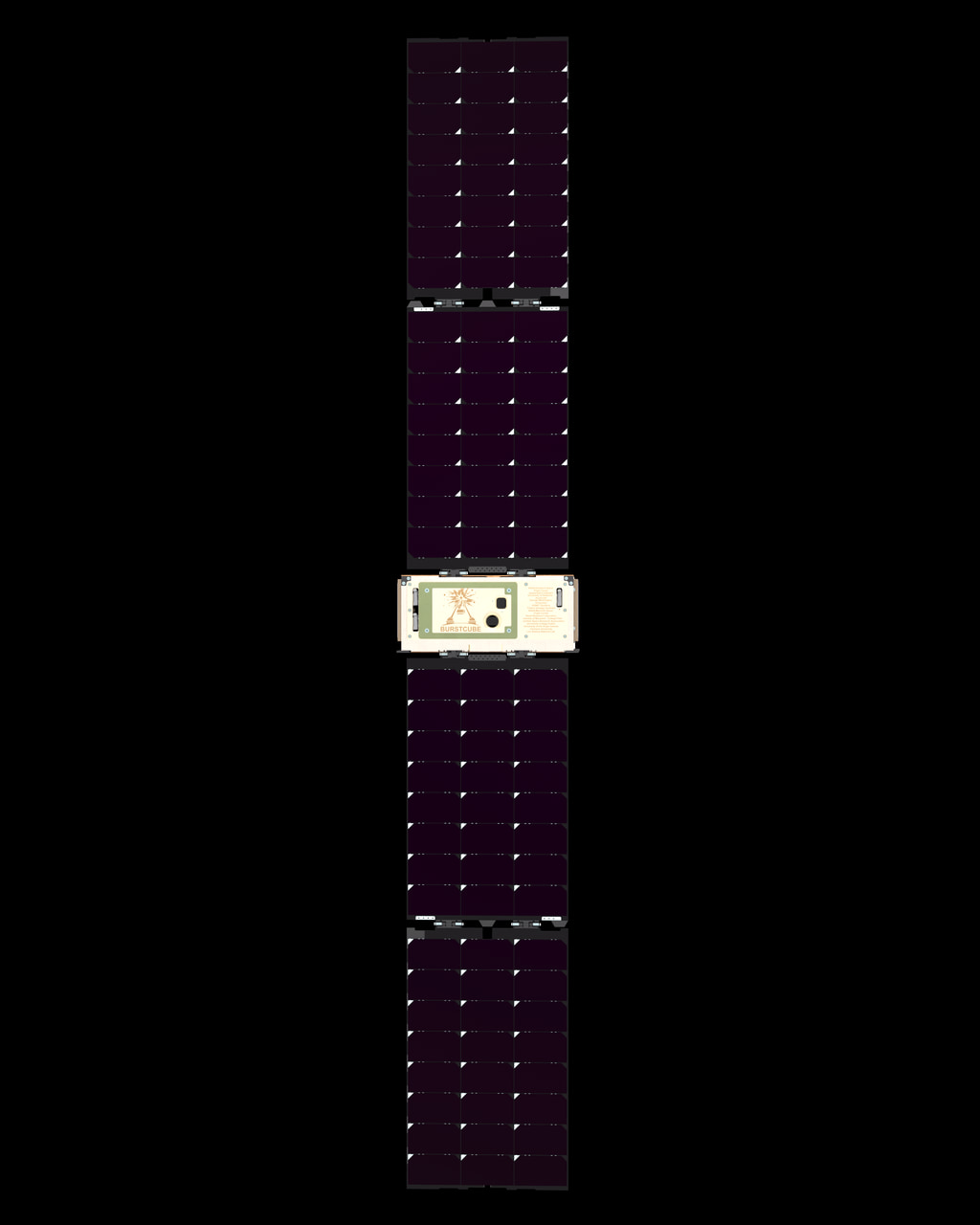BurstCube Completes Magnetic Calibration
BurstCube is a mission developed at NASA’s Goddard Space Flight Center in Greenbelt, Maryland. It is expected to launch in March 2024.
This CubeSat will detect short gamma-ray bursts, brief flashes of the highest-energy form of light. Dense stellar remnants called neutron stars create these bursts when they collide with other neutron stars or black holes. Short gamma-ray bursts, which last less than 2 seconds, are important sources for gravitational wave discoveries and multimessenger astronomy.
BurstCube will use Earth’s magnetic field to orientate itself as it scans the sky. To do so, the mission team had to map the spacecraft’s own magnetic field using a special facility at NASA’s Wallops Flight Facility in Virginia.
The magnetic calibration chamber generates a known magnetic field that cancels out Earth’s. The team's measurements of BurstCube’s field in the chamber will help figure out where the satellite is pointing once in space, so scientists can locate gamma-ray bursts and tell other observatories where to look.
The BurstCube mission team visits the magnetic calibration chamber at NASA’s Wallops Flight Facility in Virginia, in this video. The first shot shows the exterior of the building. The ensuing shots show the interior. The grey beams are made from carbon fiber and are held together by aluminum screws. The entire building is designed to avoid, as much as possible, any material that might generate a magnetic field. The fourth and fifth shots show engineers Kate Gasaway (NASA) and Justin Clavette (SSAI) lifting BurstCube out of its travel case while Benjamin Gauvain (NASA) looks on. In the sixth shot, engineers remove BurstCube – within another protective case – from a foil bag designed to avoid electrostatic discharge. In the seventh shot, Clavette sets up equipment for monitoring the spacecraft. In the eighth shot, Rob Marshall (Peraton), an environmental testing lead, watches a readout on a computer monitor. In the ninth shot, Gauvin and Pavel Galchenko (NASA) watch and report on the calibration data coming from the spacecraft. The tenth shot is another view of Marshall looking at his computer monitor. The eleventh shot shows Clavette testing BurstCube ahead of calibration before Gasaway puts the protective lid back on over it. The twelfth shot shows Gasaway connecting more wires to the spacecraft. The thirteenth shot pans over the interior of the magnetic calibration chamber. The final shot shows one of the manuals engineers used during testing.
Credit: NASA/Sophia Roberts

NASA engineers Kate Gasaway and Benjamin Gauvain prepare the BurstCube satellite for magnetic calibration testing at NASA’s Wallops Flight Facility in Virginia. Magnetic calibration maps the spacecraft’s magnetic field, information operators will need to orientate BurstCube once it’s in space.
Credit: NASA/Sophia Roberts
Alt text: Engineers work on the small BurstCube spacecraft.
Descriptive text: The bottom half of this image shows two figures in long-sleeved blue jackets. On the left is a woman wearing pink pants, her hair is bound up in a clip. On the right is a bald man wearing glasses. Both lean over a table hosting a shiny box connected to many cables. They almost completely block from view a third person, a man with long black hair, also wearing a blue jacket. On the left of the image is a series of yellow railings. The top half of the image reveals the room is bracketed by gray framework.

NASA engineer Kate Gasaway goes through a checklist ahead of BurstCube’s magnetic calibration testing at NASA’s Wallops Flight Facility in Virginia.
Credit: NASA/Sophia Roberts
Alt-text: An engineer fills out a form on a table hosting a small shiny spacecraft.
Descriptive text: This image shows a woman wearing a long-sleeved blue jacket and blue gloves. Her hair is bound up in a clip. She leans over a table, filling out a form. To the right, on the same table, is a shiny box within another clear box – the BurstCube satellite in its protective case. The dim room behind the woman is full of grey beams that cast shadows against the walls. There is an old white barn door in the far wall.

NASA engineers Benjamin Gauvain, Pavel Galchenko, and Kate Gasaway work on the BurstCube satellite in the magnetic calibration facility at NASA’s Wallops Flight Facility in Virginia.
Credit: NASA/Sophia Roberts
Alt text: Engineers work on the small BurstCube spacecraft.
Descriptive text: Three figures in long-sleeved blue jackets stand around a white table in a large room. On the table is a small, shiny, rectangular spacecraft in a clear plastic box. A pair of scissors and a roll of tape also sit on the table. One man looks at a device that is connected to the spacecraft by wires. A third figure in a teal shirt is mostly blocked from view by a woman with her hair up in a clip.

Engineers Kate Gasaway (NASA) and Justin Clavette (SSAI) prepare BurstCube for magnetic calibration testing at NASA’s Wallops Flight Facility in Virginia. The chamber is designed to generate a magnetic field that cancels out Earth’s, so mission teams can map the fields generated by their spacecraft without interference.
Credit: NASA/Sophia Roberts
Alt-text: Engineers work on the small BurstCube spacecraft.
Descriptive text: The bottom half of this vertical image shows two figures, a man on the left and a woman on the right, in long-sleeved jackets. Both are looking down at a table hosting a shiny box on a piece of foil. The table stands over a section of floor painted yellow with diagonal black stripes. The top half of the picture reveals the room is bracketed by gray beams.
Credits
Please give credit for this item to:
NASA's Goddard Space Flight Center. However, individual items should be credited as indicated above.
-
Producer
- Sophia Roberts (Advocates in Manpower Management, Inc.)
-
Science writer
- Jeanette Kazmierczak (University of Maryland College Park)
-
Videographer
- Sophia Roberts (Advocates in Manpower Management, Inc.)
Missions
This page is related to the following missions:Series
This page can be found in the following series:Release date
This page was originally published on Monday, December 18, 2023.
This page was last updated on Thursday, December 14, 2023 at 3:29 PM EST.
